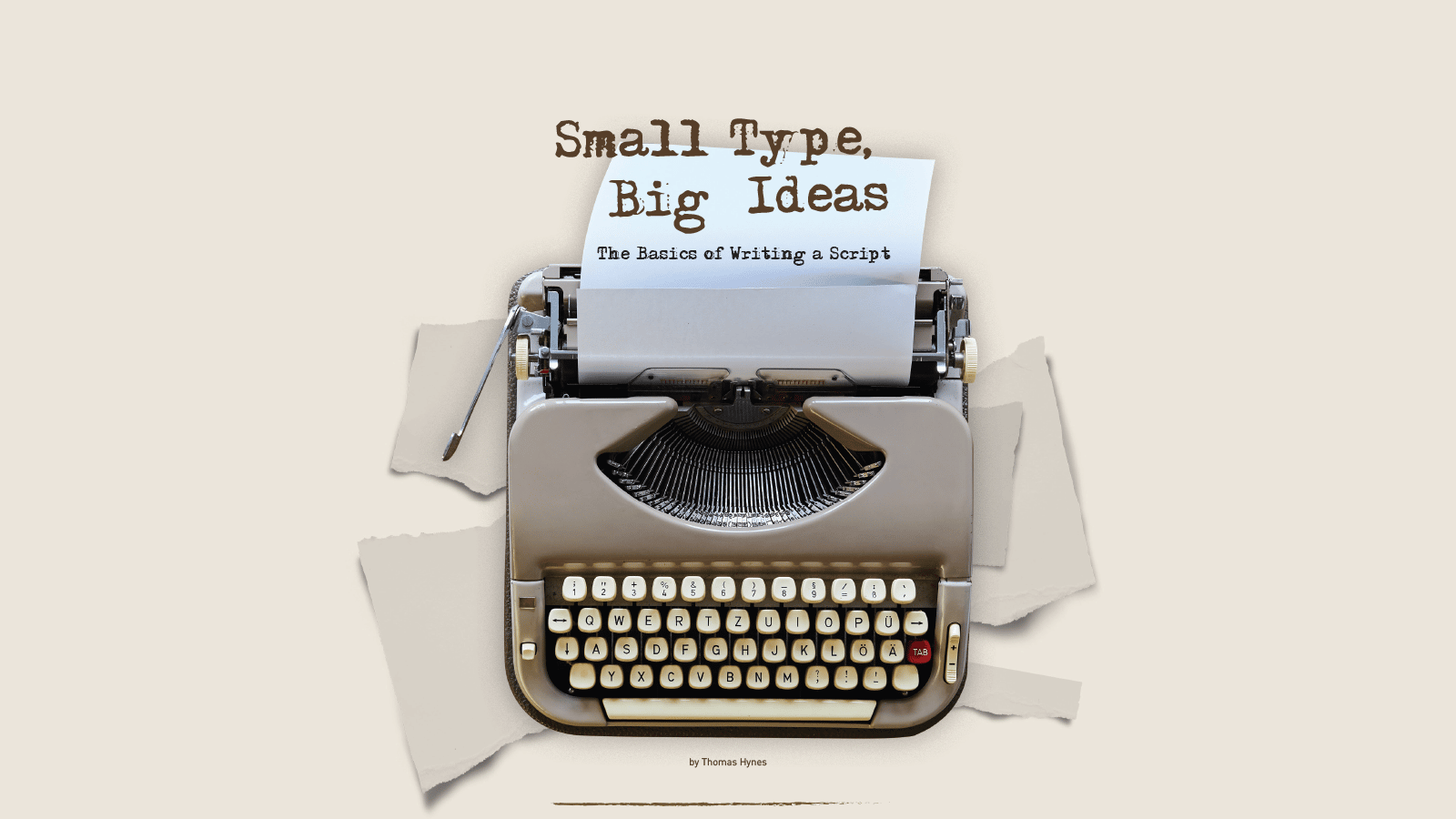Small Type. Big Ideas. The Basics of Writing a Script

Making a great video takes both planning and preparation. No matter how excited you are for “Lights! Camera! Action!” you first need a roadmap that gives everyone in the cast and crew details they need for a successful shoot.
That roadmap is a script and is the backbone of any well-run video shoot.
A good script functions as a blueprint – making small tweaks on set isn’t uncommon, but a strong script is essential to guide your team through a shoot-day.
Most scripts have three basic elements:
- Sluglines
- Action
- Dialogue
SLUGLINE
Each new scene begins with a new slugline, sometimes called a “scene heading.” If your video is on the shorter side, it may only have one scene and one slugline. No worries! Many great videos are one scene.
Sluglines are always written in ALL CAPS and should communicate whether the scene is taking place inside or outside, where the scene is taking place, and when the scene is taking place (usually either day or night.)
Here’s an example of a slugline:
INT. BATCAVE – NIGHT
It’s taking place inside (INT for interior), in the Batcave, at night.
Pro tip: if you’re somewhere that is inside and outside at the same time (like a car), use I/E for interior/exterior.
ACTION LINE
The second part of the script is the action line. These should be short, assertive sentences describing who is in the scene and what the actors doing. Action lines are written in present or active tense (since we’ll be experiencing the action on-screen.) The action should always be limited to what an audience can see and hear – this isn’t a novel, so you can’t go into what a character is thinking or feeling. This is video, so show – don’t tell.
Here’s an example of an action line:
BRUCE appears uncharacteristically cheerful. He’s smiling and eating an ice cream cone, while humming the “Batman” theme.
You may notice “Bruce” is capitalized. Whenever a character is first introduced, it’s common practice to capitalize their name.
DIALOGUE
And finally, we have the dialogue. Format however you like, but it’s usually considered best-practice to have the character’s name centered in the page with the dialogue tabbed over. If this seems like a bit much, there’s script software such as Celltx or Fountain that do the formatting for you.
Here’s a dialogue example:
BRUCE WAYNE:
I may not be a big fan of his crime, but I am a big fan of Mr. Freeze’s ice cream.
If that formatting seems like a headache and your script is short, you can format your dialogue to be left-aligned.
BRUCE WAYNE:
I may not be a big fan of his crime, but I am a big fan of Mr. Freeze’s ice cream.
Here’s how the whole script would look together:
INT. BATCAVE – NIGHT
BRUCE appears uncharacteristically cheerful. He’s smiling and eating an ice cream cone, while humming the “Batman” theme.
BRUCE WAYNE:
I may not be a big fan of his crime, but I am a big fan of Mr. Freeze’s ice cream.
These formatting details may seem small, but they help inform the cast and crew of locations they should scout, set details they’ll need to provide, actions to catch on camera and dialogue that needs to be read. An easy-to-read script that has all the essential elements of the video is the difference between a one-day shoot resulting in a great product, and an expensive, week-long shoot resulting in disappointed.
Making a video is a creative experience, and creativity thrives with collaboration. Listen to any notes from your director or actors – they might have small improvements to your script that could make the end result better.